Vesicle and Voltage
Bions, Bioelectricity and Pleomorphism
“The bion is not a dead particle, but a living unit which shows all the essential functions of life. It is the transitional form between non-living and living matter, arising whenever inorganic matter disintegrates under the influence of energy. In it we witness the bridge from physics to biology, from the dead to the living.” — Wilhelm Reich, The Bion Experiments on the Origin of Life (1938)
This article is a companion to my Forgotten Foundations article:
Forgotten Foundations
“In living nature nothing happens that is not in relation to the whole; each form is only a transformation of another.” —Johann Wolfgang von Goethe
Life from the Inorganic
Wilhelm Reich’s discovery of bions supplies the crucial energetic key that illuminates and unifies the entire somatid/microzyma lineage—threading together Bastian’s archebiosis and Béchamp’s microzymas, through Enderlein’s protits and Rife’s filterable “scintilla,” to Naessens’ somatids. When viewed through a Goethean lens of metamorphosis, polarity, and enhancement, these seemingly disparate observations cohere into a singular, coherent picture: a sub-cellular particle that is simultaneously pleomorphic (form-shifting) and pulsatory (charge-bearing), developing lawfully with terrain conditions and reversibly transforming when healthy terrain is restored.
This synthesis establishes the foundation for understanding Reich’s revolutionary psycho-somatic bridge—the relationship between character armor and the cancer biopathy—and provides context for the Psycho-Oncology: Six Phases of Cancer model, which elucidates how psycho-emotional strain establishes the precise terrain conditions that redirect the bion–somatid complex from its life-supporting functions toward degenerative pathways.
Wilhelm Reich (1897–1957) was an Austrian-American psychiatrist and psychoanalyst who revolutionized our understanding of the body-mind connection through his discovery of the orgone energy—a primordial life force he observed manifesting in microscopic vesicles called bions.
A Goethean Vantage: Seeing Life in Lawful Becoming
Goethean science fundamentally refuses premature abstraction, instead studying organisms within their natural processes of becoming, observing how a single entity passes through multiple manifestations as environmental conditions shift and change. Three fundamental operators guide this methodological approach:
Metamorphosis — the lawful transformation of one entity through many diverse forms
Polarity — rhythmic oscillation between complementary states (expansion/contraction, charge/discharge, alkaline/acid)
Enhancement — intensification that occurs when a polarity is pushed beyond equilibrium (e.g., hypoxia combined with acidity triggering pleomorphic up-cycling)
Applied to our investigation, the fundamental “unit” is not a fixed corpuscle but rather a dynamic process—an elemental life-spark capable of manifesting as granule, vesicle, bacillary or yeastlike cell, mycelial thread, and cycling back to granule, all within continuous dialogue with terrain conditions including pH levels, redox potential, oxygen tension, glucose/lactate balance, and neuro-vegetative tone.
When pulsation—the free charge/discharge rhythm that Reich identified as the fundamental characteristic of healthy orgone function—remains strong and unimpeded, the particle maintains its presence within low-order symbiotic stages (corresponding to Béchamp’s microzymas and Naessens’ somatid micro-cycle). Conversely, when pulsation becomes flattened due to stress chemistry, hypoxia, or acidic shift, the particle ascends through increasingly degenerative series (manifesting as Enderlein’s pathogenic cycle or Naessens’ macro-cycle). Critically, because this entire sequence is terrain-driven rather than genetically predetermined, it remains fundamentally reversible through restoration of proper pulsation and optimal chemistry.
Reich’s Bions: The Energetic Substrate of Pleomorphism
Reich’s groundbreaking laboratory investigations during the late 1920s and 1930s successfully produced bions—minute vesicular units—through heating or disintegrating both organic and inorganic materials, including tissue extracts, grass, coal, and even sand. Under dark-field microscopic observation, these remarkable vesicles demonstrated clear pulsation, exhibited characteristic bluish luminosity, and when placed in appropriate nutrient media, organized spontaneously into recognizable microbial forms.
In degenerative experimental contexts, Reich consistently identified T-bacilli—toxic, rod-like forms that he associated directly with tissue breakdown and cancer biopathies. What fundamentally distinguishes Reich’s contribution within the broader pleomorphic lineage is his emphasis on the energetic dimension: bions function as concentrated manifestations of orgone energy whose pulsation serves as the fundamental ground of healthy biological function. When this pulsation becomes blocked or arrested, degenerative processes inevitably follow.
Within the Goethean framework, bions represent the Ur-phenomenon of this entire field—the most elementary, directly observable expression of life’s fundamental polarity (charge ↔ discharge) before morphological elaboration occurs.
Functional Implications
Bion ↔ terrain coupling: When the surrounding milieu permits periodic discharge, bions remain vital and cooperative; when charge becomes trapped, vesicles stagnate and secondary degenerative pathways dominate
Bridging “dead” and “living”: The spontaneous emergence of bions from inorganic substrates (sand, coal) under energetic stress indicates that formative charge serves as a pre-biological foundation—providing a functional bridge from physics to biology
Continuity with the somatid: The identical vesicular dynamism observed by Naessens at the blood scale manifests in Reich’s bions as pulsation first, morphology second—demonstrating a force-to-form sequence rather than its reverse
Form and Force: Two Vantages
Reich’s bions appear to demonstrate force preceding form: vesicular sparks of charge arising spontaneously, even from inorganic substrates, only subsequently elaborating into recognizable microbial morphology. This observation initially seems contradictory to the fundamental dictum of spiritual science, as articulated by Ernst Lehrs, that in nature it is invariably “form before force”.
Ernst Lehrs (1894–1979) was a German physicist and educator who worked extensively within Rudolf Steiner’s Anthroposophical framework, developing a spiritual-scientific understanding of natural phenomena that recognized archetypal formative principles as primary causative agents. His work emphasized that higher, archetypal forms exist as organizing principles prior to their manifestation in physical phenomena.
This apparent tension dissolves when we recognize that fundamentally different orders of form are being discussed. Lehrs refers not to the visible outlines of microbes or tissues, but to a higher, archetypal formative law—in the Goethean sense—already present and actively working before force becomes sensibly perceptible. From this elevated perspective, the pulsation and bluish luminosity characteristic of bions represent not “mere force,” but rather the first perceptible trace of higher form as it condenses into manifest force.
Thus, two complementary vantages converge:
At the spiritual-scientific level: Higher form—an archetypal Idea, etheric architecture—precedes and actively shapes manifestation
At the empirical level of microscopic observation: What we initially perceive is force—pulsation, charge, vesicular vitality—through which morphology subsequently unfolds
Rather than representing a contradiction, this constitutes a fundamental polarity. The discursive eye perceives force becoming form; the spiritual eye recognizes that force itself already represents form-in-action. Maintaining both perspectives simultaneously remains faithful to Goethe’s methodological approach: never reducing form to force, nor force to form, but perceiving in their dynamic interplay the living archetype actively at work.
Bastian’s Archebiosis as Early Pleomorphosis
Henry Charlton Bastian (1837–1915), a distinguished physician and neurologist at University College London, stood virtually alone in Victorian science with his unwavering conviction that life could and did arise continuously from non-living substrates. His technical term for this phenomenon was archebiosis, a continual genesis of elementary living units from nutrient solutions, infusions, and decaying organic matter.
In his seminal work The Beginnings of Life (1872), Bastian provided detailed descriptions of microscopic observations showing elementary granules appearing spontaneously in prepared broths, swelling into minute vibriones, and subsequently developing into filamentous or bacillary forms. His experimental preparations—meat infusions, hay decoctions, simple sugar broths—were deliberately not sterile in the modern sense, and this methodological choice proves crucial: these preparations provided shifting terrain conditions where invisible particles could condense into visible microbial morphologies.
When interpreted through the bion–somatid lens, Bastian was not observing mere “contaminants” but rather witnessing the terrain-conditioned metamorphosis of a fundamental basal particle. His “elementary granules” align precisely with what Béchamp subsequently named the microzyma, what Enderlein called the protit, what Naessens revealed as the somatid—and what Reich demonstrated to be pulsatory bions. His much-contested vibriones foreshadow the detailed pleomorphic sequences later mapped with greater precision by both Enderlein and Naessens.
The nutrient composition, pH balance, and oxygenation levels of Bastian’s experimental infusions created shifting polarities—rich/lean, alkaline/acidic, oxygenated/hypoxic—that steered the developmental trajectory of emerging forms. In Goethean terms, Bastian was witnessing lawful becoming: the emergence of morphology as terrain oscillated between complementary poles. Bastian’s meticulous observational accounts stand today as early testimony to pleomorphosis: life appearing not as fixed species descending from a single ancestral cell, but as a dynamic continuum of form arising wherever terrain and energy conditions invite its manifestation.
Béchamp’s Microzymas: Indestructible Units, Reversible Cycles
Antoine Béchamp (1816–1908), contemporary and intellectual rival of Pasteur, refined Bastian’s broad observations into a systematic theory centered on life’s elemental particle, which he named the microzyma—literally meaning “small ferment”. For Béchamp, the microzyma demonstrated four fundamental characteristics:
Ubiquitous — present universally in all tissues, fluids, and even calcareous deposits
Indestructible — surviving putrefaction, burning, and chemical stress
Creative — elaborating into bacteria and yeasts under nutrient-rich conditions
Reversible — regressing back into granular forms when substrates become exhausted
In his comprehensive work Les Microzymas (1883), Béchamp documented extensive fermentation experiments in which identical microzymas would blossom into bacilli, yeastlike cells, and mycelial threads, only to collapse back into their primal granular state when environmental resources became depleted. This represented pure metamorphosis: lawful alternation of forms governed entirely by terrain conditions.
Where Pasteur declared categorically “the germ is everything,” Béchamp responded with equal conviction: “the terrain is everything”. The microzyma was not a fixed species but rather a formative principle: an elemental particle capable of multiple developmental trajectories depending entirely upon milieu conditions.
Reich’s bions provide the crucial energetic foundation underlying this chemistry. The microzyma is not inert matter; it is charged, pulsatory, and capable of transformation precisely because it embodies a discrete unit of orgone energy. Naessens’ later detailed somatid cycles recapitulate Béchamp’s fundamental findings with exquisite morphological precision, but Reich supplies the essential why: the microzyma functions as a vesicle of charge, and its up-cycling or down-cycling trajectory is determined by whether charge can discharge freely (health) or becomes trapped and stagnant (disease).
Béchamp’s insistence on reversibility, that degenerative forms can collapse back into benign granules when terrain conditions clear, remains a decisive counter-argument to fixed-germ theory. This principle also provides the essential bridge allowing us to understand cancer not as a unidirectional march toward entropy, but as a terrain-driven, fundamentally reversible process, provided charge and pulsation can be restored.
This principle (reversibility of condition) also provides the essential bridge allowing us to understand cancer not as a unidirectional march toward entropy, but as a terrain-driven, fundamentally reversible process, provided charge and pulsation can be restored.
Enderlein’s Protits: Cyclogeny Under Terrain Law
Günther Enderlein (1872–1968), German zoologist and bacteriologist, advanced the pleomorphic lineage by introducing two crucial concepts: the protit and cyclogeny.
The protit represented for him the smallest living particle, a symbiotic granule found naturally in healthy blood and tissues
Cyclogeny described the lawful sequence of developmental stages that the protit could undergo depending entirely on terrain conditions
In optimal health, protits remain within their symbiotic cycle; tiny granules supporting cellular metabolism, invisible to standard microscopy but foundational to vitality. Under disturbed terrain conditions, particularly acidification and redox debt, the protit up-cycles into a pathogenic cycle, ascending through coccoid, bacillary, filamentous, and eventually mycelial forms.
Enderlein’s fundamental law was unequivocal: terrain serves as the steering mechanism. The identical protit that nourishes life in one milieu can generate pathology in another environmental context. He even developed innovative isopathic remedies, preparations containing lower-order symbionts intended to “reset” terrain conditions and pull the developmental cycle back down toward health.
When Reich’s insights are integrated here, the picture gains remarkable depth. Enderlein provided the morphological mapping; Reich explained the underlying energetics. The protit’s developmental direction, toward symbiosis or pathogenicity, depends fundamentally on whether orgonotic pulsation can discharge freely or becomes blocked, leading to charge stagnation and acidic drift. Enderlein gave us the detailed map; Reich supplied the driving engine.
Rife’s Filterables: Optical Continuity and Luminous Charge
Royal Raymond Rife (1888–1971), with his revolutionary Universal Microscope of the 1930s, revealed an even subtler dimension of pleomorphosis. His extraordinary instrument disclosed ultra-small, turquoise-luminous points, which he termed “filterable forms” or “scintilla”, capable of passing through porcelain filters and later reconstituting into rods, threads, and higher microbial structures as terrain conditions shifted.
Rife documented these remarkable forms as luminous, motile, and transitional—not fixed species, but rather a living continuum of light-points elaborating into increasingly complex morphologies. His groundbreaking cinematographic films captured in real time what Béchamp and Enderlein had described in more static terms.
The resonance with Reich’s observations proves unmistakable. Rife’s luminous scintilla represent bions observed through another optical idiom. The same characteristic bluish glow, identical pulsation, the same remarkable capacity to bridge “sub-visible” and microbial scales. Both investigators also noted the pathogenic trajectory: Rife associated specific transitional forms with tumor induction, just as Reich identified T-bacilli in degenerative contexts.
Rife contributed one additional crucial element: his observations suggested that the forms themselves possessed distinct spectral signatures: specific light frequencies that could be disrupted by precisely tuned radio frequencies. In other words, disease forms might be not only reversible through terrain restoration but also selectively vulnerable to targeted energy fields.
Naessens’ Somatids: Micro-Cycle, Macro-Cycle, and Reversibility
Gaston Naessens (1924–2018) crowned this investigative lineage with the most detailed morphological mapping achieved to date. Utilizing his Somatoscope—a dark-field microscope of extraordinary resolving power—he identified the somatid as a permanent blood particle visible in every living organism.
Naessens distinguished two fundamental cycles:
The Micro-Cycle (3 stages)
Somatid → spore → double-spore
Always present in health; supports mitosis and cellular renewal
The Macro-Cycle (16 stages)
Triggered under conditions of immune suppression, acidity, or oxygen debt
Somatids elaborate into bacterial, mycobacterial, yeastlike, and mycelial forms
These higher developmental forms ferment accumulated glucose/lactate and secrete acidic by-products that further degrade terrain conditions
The crucial insight: complete reversibility. Naessens observed directly that when terrain was restored, oxygen tension normalized, pH balanced, immune function supported: the pathological macro-cycle collapsed back into the benign three-stage micro-cycle.
In Goethean terms, Naessens provided the visible metamorphoses in unmatched morphological detail, while Reich supplied the energetic pulse that drives or relaxes these transformations. One investigator described the choreography, the other revealed the underlying rhythm.
The Triadic Synthesis
Enderlein provided the fundamental law of terrain-driven cycles
Rife revealed the optical continuity of luminous transitional forms
Naessens mapped the complete cycles of health and pathology, demonstrating reversibility
Together they confirmed what Bastian first glimpsed and Béchamp systematized: life’s fundamental particle is not a static germ but rather a pleomorphic, reversible, terrain-sensitive continuum. With Reich’s bions as the energetic foundation, the complete picture emerges: form and force, morphology and pulsation, cycling lawfully in precise synchronization with terrain conditions.
Character Armor, Cancer Biopathy, and the Six Phases of Psycho-Oncology
Reich’s revolutionary concept of character armor, chronic muscular and respiratory rigidity that suppresses feeling, breath, and vegetative pulsation, provides the essential psycho-somatic bridge connecting psychological states with biological terrain. Armor locks the organism in persistent sympathetic overdrive, flattening natural pulsation rhythms and systematically exhausting hormonal reserves.
Reich’s diagnostic framework of the cancer biopathy described a characteristic shrinking functional pattern: diminished organismic charge, progressively shallow respiration, and metabolic drift toward anaerobic conditions. This terrain profile corresponds precisely to the conditions formalized and expressed in the 2023 paper Psycho-Oncology: The Six Phases of Cancer.
Phase 1 — Prolonged Psycho-Emotional Trauma
Chronic conflict and psychological repression sustain character armor and autonomic over-activation, fundamentally disturbing neuroendocrine rhythm. In Reich’s terminology, orgonotic pulsation becomes severely damped; in biochemical terms, stress chemistry is driven beyond homeostatic capacity.
Phase 2 — Adrenaline Depletion; Mitochondrial Breakdown
With pulsation chronically blocked, the organism depletes its energetic reserves. Adrenal function falters, mitochondria weaken, and oxidative phosphorylation loses its natural stride. This represents the bioenergetic manifestation of charge depletion that Reich described as the organism’s shrinking functional field.
Phase 3 — Glucose/Lactate Accumulation; Acidification
As cellular respiration fails, cells pivot toward fermentation metabolism. Lactate levels rise, tissue pH falls. Here the bion–somatid complex encounters the polarity that Goethe described: expansion (catabolic intensification) occurring without corresponding contraction (restorative discharge). This skewed polarity actively invites pleomorphic up-cycling.
Phase 4 — Somatid Pleomorphosis
The somatid abandons its healthy three-stage micro-cycle and elaborates higher pathological forms—bacterial, yeastlike, mycelial. These elevated forms systematically ferment the glucose/lactate excess created by chronic stress. In Reich’s language: blocked discharge transforms vital charge into stagnation, which life attempts to metabolize through secondary, degenerative pathways.
Phase 5 — Nuclear Migration; Mycotoxins; Repair Blockade
Fungal-like developmental stages invade nuclear structures, releasing acidic by-products that systematically impede DNA repair mechanisms and silence tumor suppressor genes. Energetically, pulsation no longer reaches the cellular center: the nucleus falls out of organismic rhythm, and biological order yields to progressive disorganization.
Phase 6 — Oncogenic Shift
With repair mechanisms suppressed, proto-oncogenes activate inappropriately. Damaged cells survive rather than undergoing natural apoptotic death. This represents the terminal expression of terrain that has fundamentally lost polarity and rhythm.
In both Reich’s cancer biopathy model and contemporary Psycho-Oncology research, the decisive insight remains consistent: pathological processes are directional but fundamentally reversible. Restore orgonotic pulsation, deepen respiratory patterns, clear lactate accumulation, rebalance tissue pH, and the pathogenic developmental sequence collapses. Mycelial and yeastlike forms regress back into the indestructible particle—whether termed somatid, microzyma, or protit.
The Bion–Somatid Continuum: One Phenomenon, Two Languages
The fundamental insight emerges with clarity: bions and somatids represent two complementary views of identical phenomena.
The somatid lineage (Bastian → Béchamp → Enderlein → Rife → Naessens) describes the morphological dimension: what specific forms appear, in what developmental sequence, under which terrain conditions. It provides the detailed choreography of metamorphosis—the granule, the spore, the bacillus, the thread, the mycelium.
Reich’s bion thesis contributes the crucial energetic dimension: demonstrating how orgonotic pulsation—the fundamental rhythm of charge and discharge, expansion and contraction—determines whether those morphological forms elaborate upward into degeneration or collapse back into symbiosis. Reich demonstrated conclusively that the vesicle is not inert matter but rather an active carrier of charge, glowing, vibrating, and transforming in precise rhythm with terrain conditions.
Goethean science demands maintaining both dimensions simultaneously: form and force, morphology and pulsation. The particle cannot be comprehended apart from its field context, nor can the field be understood apart from its particulate manifestation.
From one investigative vantage, the somatid appears as a microbial drama unfolding across developmental stages
From another perspective, the bion manifests as a luminous vesicle of charge whose rhythmic pattern steers that morphological drama
Perceived as a unified continuum, they represent one Ur-phenomenon expressed in two complementary languages: the idiom of morphology and the idiom of energetics
Health represents pulsation functioning in natural rhythm, maintaining the somatid within its three-stage micro-cycle. Disease manifests as pulsation held in arrest, driving the particle to ascend through pathogenic elaborations. Because this entire process operates lawfully and remains terrain-driven rather than genetically predetermined, it maintains fundamental reversibility—always capable of collapsing back to the indestructible granule when proper charge dynamics are restored.
The bion–somatid continuum therefore represents not merely a theory of microbes, but rather a comprehensive science of life itself: illuminating how form and force interweave dynamically, how psychological states actively shape biological terrain, and how vitality can be systematically lost and methodically regained.
Toward the Electrical Face of Life
While Reich’s bions revealed the vesicular carriers of life energy, other pioneering researchers approached the same fundamental mystery from a complementary angle, through direct electrical measurement. Their vocabularies differed significantly, millivolts, currents, fields, circuits, but their core insights converged on an identical principle: life functions as fundamentally a matter of charge and electrical flow as much as chemistry and morphology.
George Washington Crile (1864–1943), distinguished surgeon and founder of the Cleveland Clinic, argued persuasively in The Phenomena of Life (1936) that vitality represents a sophisticated form of electrical combustion. For Crile, cells functioned not merely as chemical engines but as complex electron-flow devices, each of the 28 trillion cells in the human body operating as a tiny electric cell with a positive acidic nucleus held within an oily lipoid film and an alkaline cytoplasm creating minute electrical potential. Cancer, in his analytical framework, was not primarily a local lesion but rather a short-circuit in cellular oxidation-reduction balance: the normal alternating pattern of expansion and contraction, life’s fundamental polarity, systematically disrupted.
Harold Saxton Burr (1889–1973), professor of anatomy at Yale University, mapped what he termed the L-field (L for “life”) by systematically attaching precision voltmeters to living tissues. His research demonstrated conclusively that bioelectric potentials shift predictably with growth, regeneration, and disease processes, and that these measurable electrical changes could anticipate illness before clinical symptoms appeared. In Burr’s technical language, “the field comes first, form follows”. Burr thus echoed, in quantitative terms, the same polarity identified earlier: what appears as measurable force to scientific instruments already represents form-in-action at a higher organizational level. Burr’s L-field measurements can be interpreted as the electrical manifestation of archetypal form—the very principle Lehrs articulated, now glimpsed through electrode readings.
Robert O. Becker (1923–2008) translated this insight directly into clinical physiology. In his influential works The Body Electric and Cross Currents, he demonstrated experimentally that minute direct currents (DC) flow systematically along tissue planes and actively guide wound healing and regenerative processes. When these subtle currents become disrupted, regeneration fails predictably; when properly restored, even damaged bone tissue can regrow completely. Becker described this phenomenon as the body’s “DC control system”. Functionally, this represents Reich’s orgonotic pulsation rendered quantifiable: health depends fundamentally on rhythmic flows of subtle bioelectric current, while disease processes begin when these natural flows become flattened or disrupted. Becker provided the precise electrical mapping of regenerative processes, the measurable pathways along which orgonotic pulsation expresses itself in tissue repair.
Björn Nordenström (1919–2006), distinguished radiologist and former chairman of the Nobel Committee, proposed the revolutionary concept of biologically closed electric circuits (BCECs). His research demonstrated that electrical currents circulate systematically within living tissues much like conventional electrical devices, creating localized electromagnetic fields that organize transport, healing, and tumor modulation processes. His clinical experiments with electrotherapy for cancer treatment drew directly on this principle: by methodically restoring circuit integrity, pathological electrical patterns could be normalized and degenerative processes reversed. Nordenström identified the vascular-interstitial closed circuit (VICC) as a primary bioelectric system—functioning as a circulatory system in addition to mechanical circulation, powered by metabolic energy or injury currents, capable of bidirectional ion transport. His approach provided quantitative validation of terrain theory: electrical imbalances within these circuits create the precise conditions that drive pleomorphic up-cycling.
Jerry Tennant (born 1940), ophthalmologist turned integrative physician, distilled these insights into practical therapeutic applications. His research established that healthy cells maintain voltage between -20 to -25 millivolts, but require -50 millivolts for active regeneration and healing. Chronic disease, in Tennant’s framework, represents cells dropping below -20 millivolts and losing their capacity for repair and regeneration. His development of the Tennant BioModulator®, a device delivering precisely targeted microcurrent therapy, demonstrated that voltage restoration could systematically reverse degenerative processes. Tennant’s clinical maxim became elegantly simple: “Healing is voltage”.
Synthesis: Form, Force, and the Vesicle
Each of these researchers—Crile, Burr, Becker, Nordenström, Tennant—offered force-first metrics: voltages, fields, circuits, potentials. Yet what was missing in their formulations is precisely what Reich supplied: the living vesicle itself—the bion. While the somatid, microzyma, and protit represent elemental particles existing at the threshold between life and death, Reich’s bions manifest as actively pulsating, luminous carriers of charge, true living vesicles rather than indestructible boundary particles. Without this energetic vesicle, electricity risks being treated as an abstraction, a property of wires and meters rather than of organisms.
Together, they provide a comprehensive science of form and force. The somatid lineage provides the form—the choreography of pleomorphosis, the detailed morphological mapping of how the elemental particle transforms through developmental stages. The bioelectric lineage provides the force—the measurable flows and potentials, the quantifiable currents that drive regeneration and healing. And Reich’s bions unite the two: form that is already force, force that is already form, pulsatory vesicles of charge whose rhythm determines whether morphological elaboration proceeds toward health or pathology.
This represents the Goethean resolution of Lehrs’ dictum. The higher archetypal form precedes and shapes, but in the microscope we witness force condensing as form, pulsation becoming visible, charge expressing itself as luminous vesicles. Burr’s voltmeter, Becker’s electrode, Tennant’s millivolt chart, all are measuring instruments detecting shadows of the same archetype that Reich glimpsed glowing as a bion.
Closing Horizon
What fundamental difference distinguishes the living from the dead? Western medicine still provides no adequate answer. But through this investigative lineage, from Bastian’s archebiosis to Naessens’ somatids, from Reich’s bions to Burr’s L-fields, we begin to glimpse a unified response: pulsation.
Life manifests as the rhythmic alternation of charge and discharge, form and force, psyche and soma. Disease represents pulsation arrested, rhythm flattened, polarity collapsed into stagnation. Healing constitutes pulsation restored, rhythm renewed, the fundamental alternation between expansion and contraction reestablished. To perceive particle and field together, bion and voltmeter, somatid and circuit, orgone and millivolt, is to glimpse a science of life worthy of the designation: empirical yet holistic, reversible yet lawful, profoundly human yet rigorously scientific.
Recent research in psychoneuroimmunology confirms these insights through sophisticated molecular pathways, demonstrating how emotional states directly modulate immune function, cellular voltage, and metabolic processes. Advances in bioelectromagnetics reveal that electromagnetic fields influence everything from embryonic development to tumor regression. Studies in energy medicine validate the therapeutic efficacy of approaches that restore bioelectric balance through targeted frequency applications. These developments suggest that the bion–somatid synthesis may represent not merely historical curiosity but rather the foundation for a new medical paradigm.
Coda: Electricity and Life Energy
Wilhelm Reich’s bions remind us that life cannot be reduced to chemistry or morphology alone. In the vesicle we witness a spark—bluish, pulsatory, luminous—what he termed orgone. In other tongues it has been called ether, prana, chi, qi: always the same fundamental experience of life as charge, as breath, as rhythm. One can traverse the most sophisticated laboratories of the West and never encounter a professor who explains the intrinsic difference between a living human being and a corpse in terms of energy. Yet in the streets of Shanghai, Hong Kong or Varanasi, even a porter or sweeper may pause to practice breath, posture, qi-gong—shaping their life-energy as naturally as breathing.
In parallel development, a Western lineage converged on the same mystery, though expressed in the technical idiom of meters and electrodes:
Crile articulated electrical combustion, describing each cell as a flicker of electrons in sophisticated oxidation-reduction patterns
Burr mapped the L-field, revealing the life-field that precedes and patterns morphological form
Becker traced the body’s DC currents, identifying the control system underlying regeneration and healing
Nordenström revealed closed electric circuits within tissues, demonstrating how bioelectric patterns shape both repair and decay
Tennant distilled the principle into therapeutic maxim: healing requires voltage, and chronic illness represents the systematic loss of cellular charge
Each of these pioneering investigators provided us with numbers, graphs, potentials, circuits: quantifiable measurements that drew the measurable shadows of vitality. But what remained absent in their rigorous formulations is precisely what Reich positioned at the center: the carrier itself, the living vesicle, the indestructible particle. Without this recognition, electricity becomes merely an abstraction of wires and screens, divorced from the living processes it attempts to measure. With the vesicle as foundation, electricity reveals itself for what it truly represents: life in movement, form expressing itself as force.
Here the fundamental polarity achieves resolution. The dictum of spiritual science—”form before force”—receives proper recognition, for the archetypal form precedes and actively guides manifestation. But in microscopic observation, what we initially behold is force appearing first, pulsation announcing the descent of form into visible manifestation. Burr’s voltmeter, Becker’s electrode, Tennant’s millivolt scale, these function as measuring instruments of archetype, reading in quantifiable shadow what Reich witnessed glowing directly in the vesicle.
To synthesize these complementary approaches is to glimpse the possibility of an entirely new science :
A Goethean biology where form and force are never divorced but perceived as complementary aspects of unified process
A Reichian energetics where pulsation serves as the fundamental measure of health, vitality, and therapeutic success
A bioelectric physiology where cellular charge is systematically tracked, restored, and therapeutically guided
The circle thus achieves completion. From Bastian’s archebiosis to Béchamp’s microzyma, from Enderlein’s protit to Rife’s luminous scintilla, from Naessens’ somatid to Reich’s bion, from Crile’s combustion to Burr’s L-field, from Becker’s DC currents to Tennant’s healing voltage—one continuum, one fundamental drama: life as pulsation, reversible, rhythmic, ever-becoming.
Health manifests as pulsation in natural rhythm, the elemental particle maintained within its creative symbiotic cycle. Disease represents pulsation in arrest, rhythm flattened, the particle driven through pathogenic elaborations. Healing constitutes the systematic restoration of rhythm, the methodical return of the elemental particle to its life-supporting function.
This represents the horizon that now opens before us: an etheric biology that unites pleomorphism and bioelectricity, terrain theory and voltage medicine, Goethe’s metamorphosis and Reich’s orgone, the East’s ancient wisdom of chi and the West’s emerging understanding of bioelectric charge. A science that speaks in both languages yet transcends both individual approaches, offering a unified vision capable of glimpsing the whole—form and force dancing together in the eternal rhythm that distinguishes the living from the dead.
In this synthesis, we discover not merely another theory but rather a complete reorientation: from viewing disease as fixed pathology to recognizing it as reversible process, from treating symptoms to restoring fundamental rhythm, from mechanistic intervention to energetic restoration. The bion–somatid continuum thus points toward a medicine worthy of life itself, empirical yet holistic, scientific yet human, capable of honoring both the measurable shadows and the luminous essence of the phenomenon we call life.
🌟 Keep the Flame Alive
If this work has sparked wonder, stirred forgotten knowledge, or opened hidden dimensions to you—your presence matters.
This is not passive reading. It is participation in the renewal of living knowledge.
Right now, this work continues only through the direct support of those who value it.
Can you help me keep it alive?
🜍 If it matters to you, help it endure.
Your support makes possible:
Deep research into suppressed and forgotten sciences
Creation of original symbolic works to awaken deeper seeing
Defending the flame of initiatic knowledge in an age of forgetting
Even small acts—sharing this work, buying a piece, or offering a kind word—truly matter.
Stand with this work now. Be part of its living circle.
What people say about my work:
“Thomas’ lectures are worth watching several times. Gold in every minute. So grateful for them.” —JE
“The absolute best. It always fills me with joy to watch Thomas’ lectures, restores my sanity in these crazy times.” —KS
“I so love your work. You’re a beautiful human angel.” —JG
“Your work is very important, continues to be a solid support and inspiration to me through all the madness, Thomas - thank you!” —K
“Amazing information and intellect” —LW
“Thank you for this incredible information” —VR
“Thomas has labored long and mightily in that most difficult of all assignments: presentation of new ideas and conceptions to a world determined to go to hell.” —Trevor James Constable




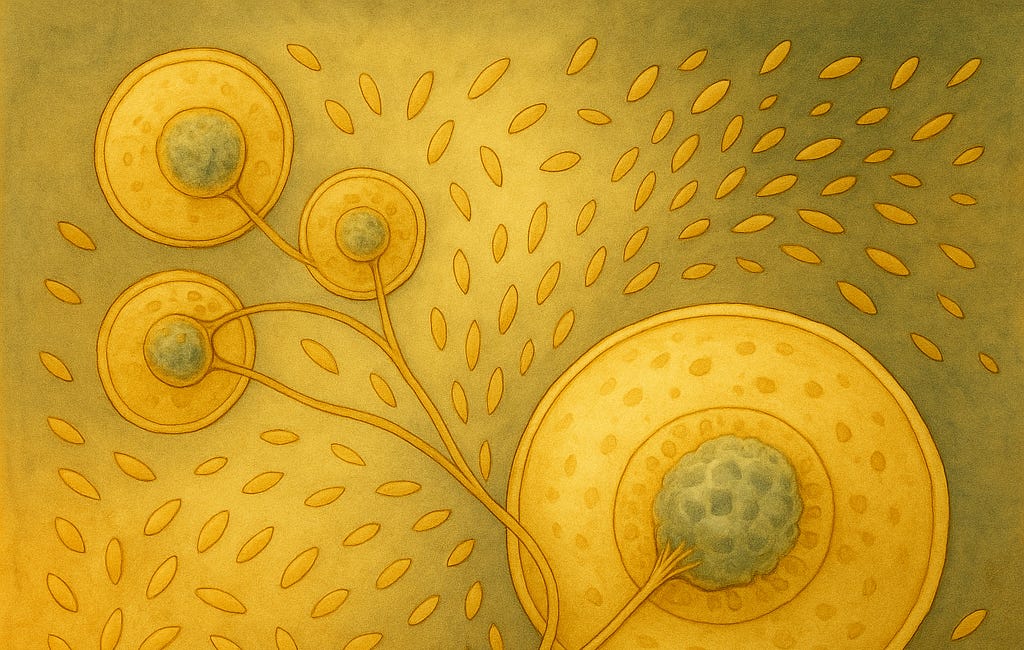

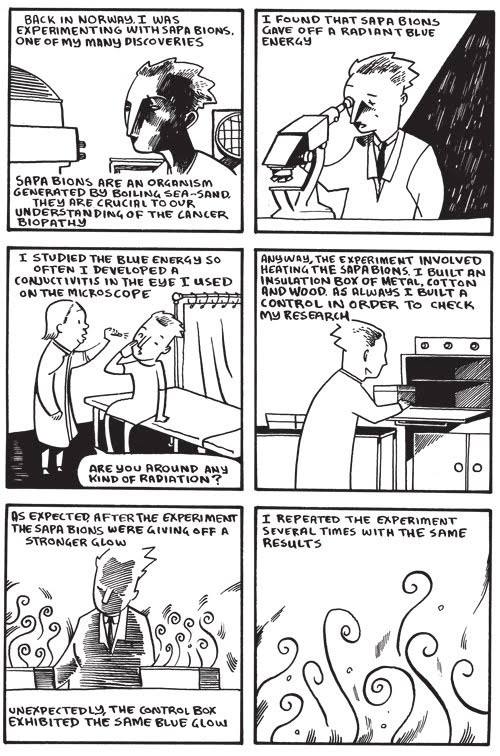
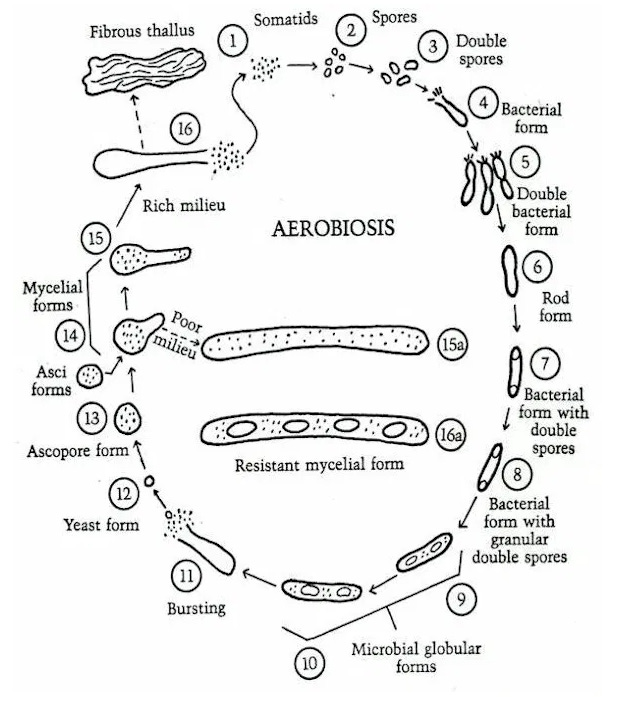
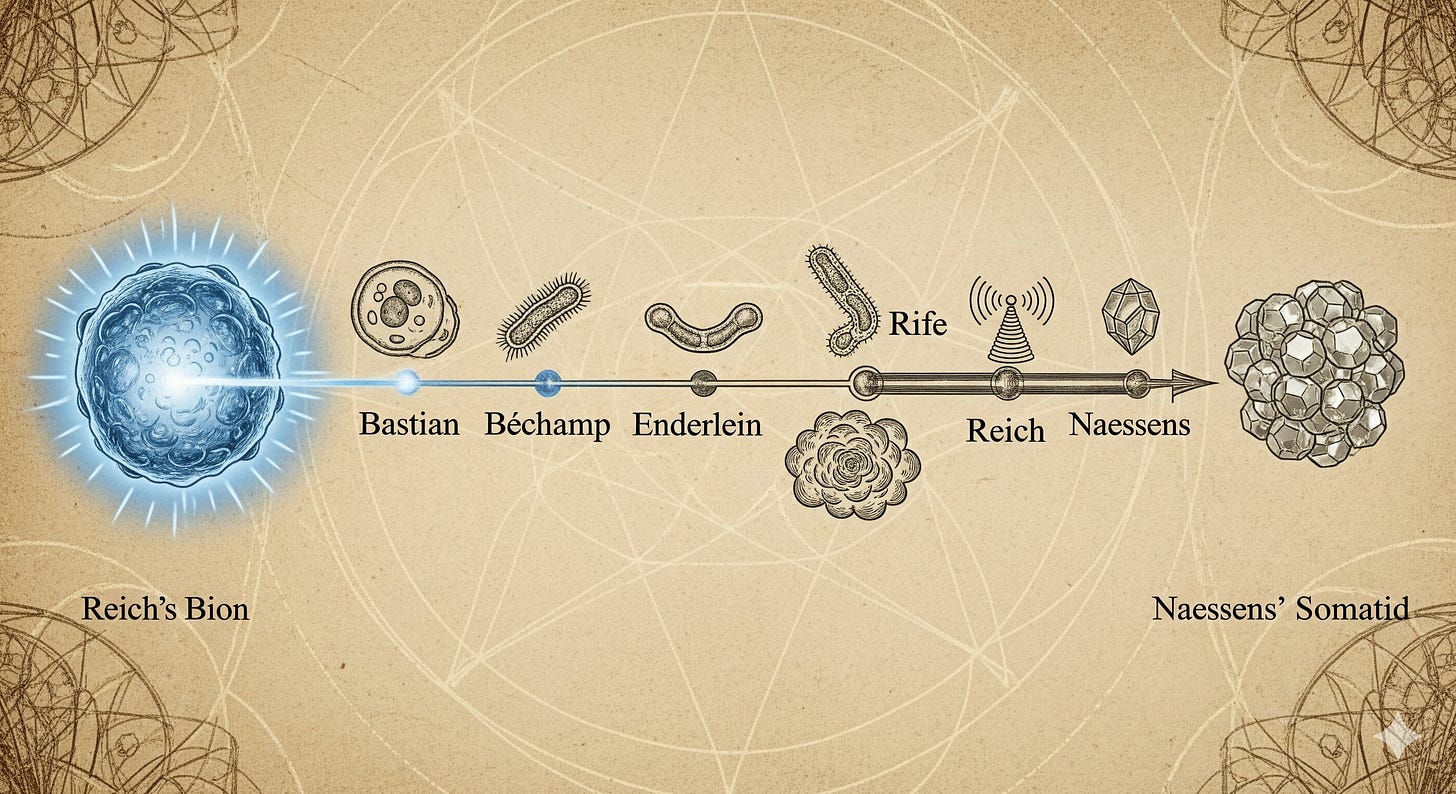
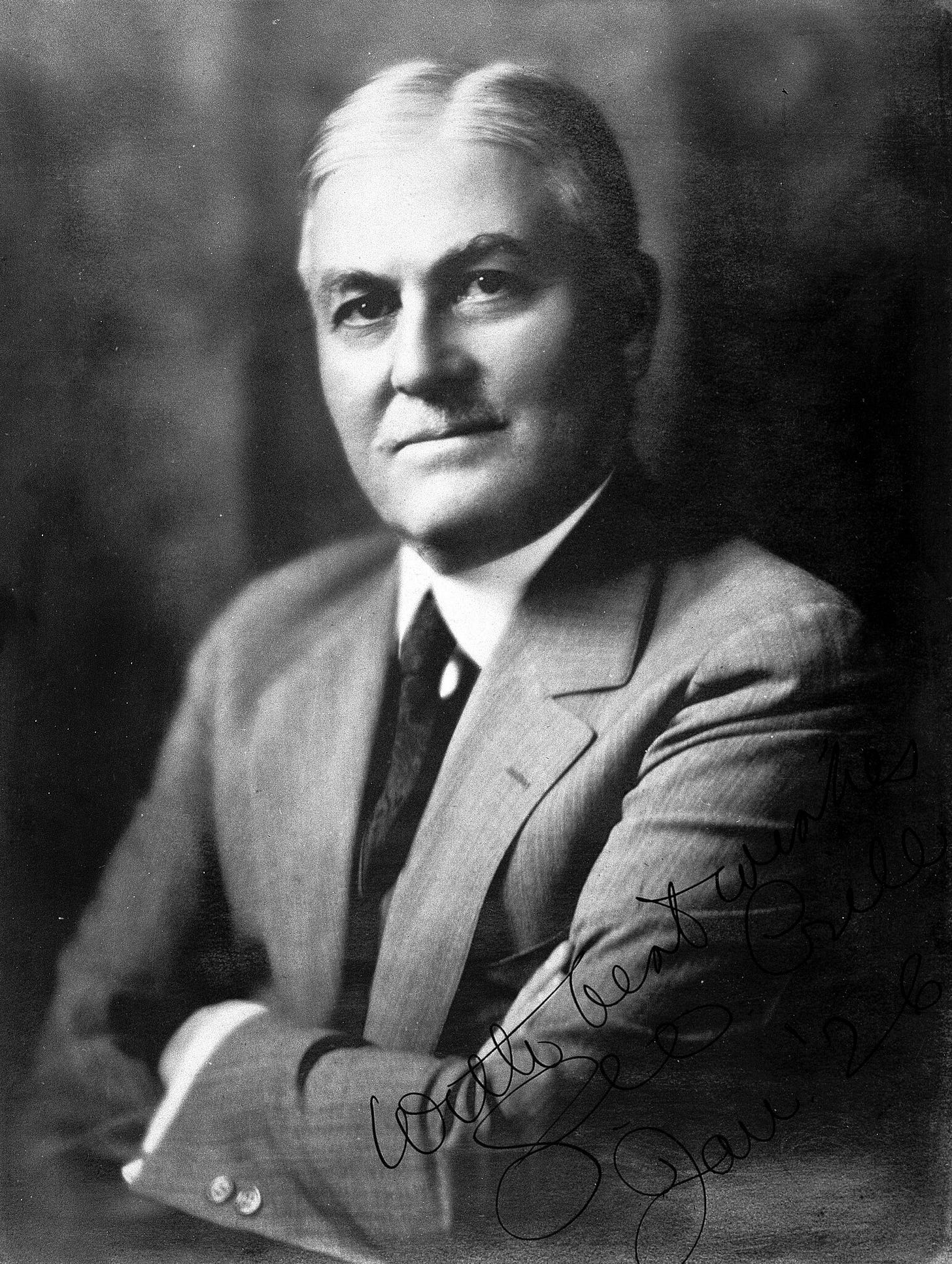
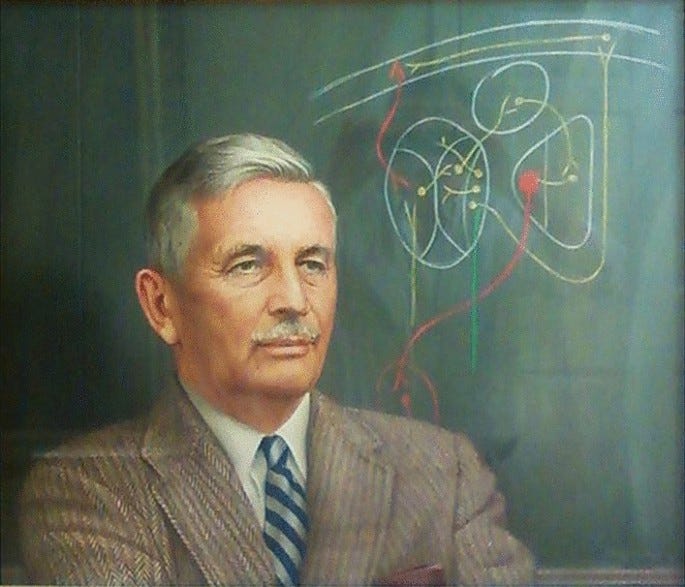
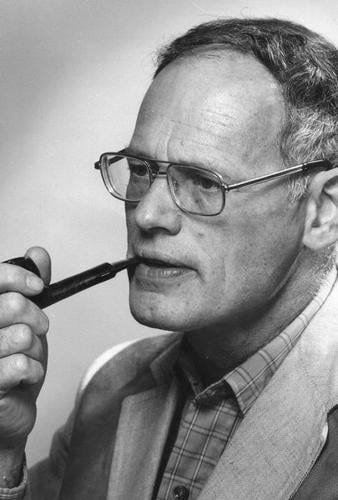
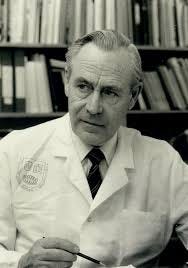
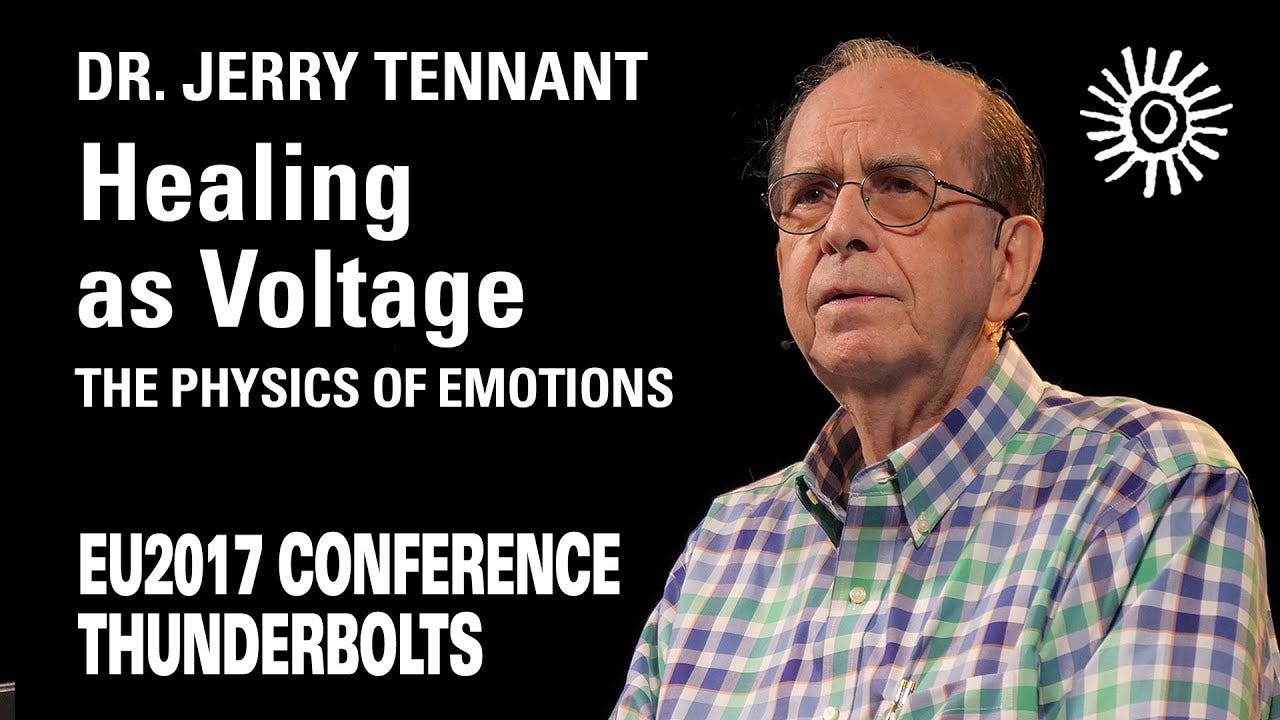
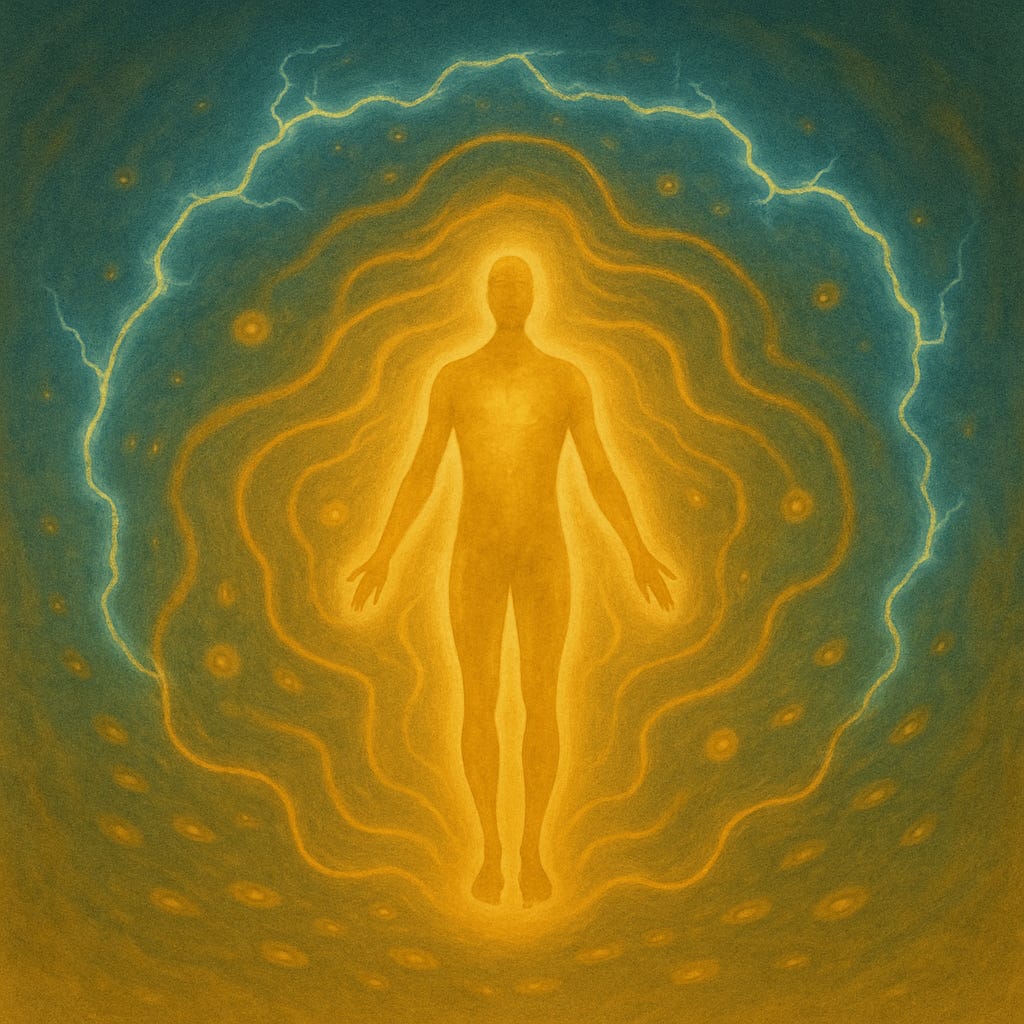



This is just gold my darling! Bless you xxx
This is brilliant, riveting work. Thank you for the depth synthesis here presented, Thomas, absolutely what is required today to form an indelible understanding of the subtle evolutionary developments that have gone on 'under the radar', &/or deliberately repressed, for countless years. Really I felt overcome reading the text, having come face to face in my life with a dis-ease state that can render a person forever weakened unto obliteration, but due to years of self-inquiry and study/contemplation that was not to be! I resurrected and lived large to tell the tale -- 'in the dirt you shall find it', oh yes indeed. Praises be to the trailblazers, the ones' who bucked tradition, the outliers, and many thanks to you, chronicler and code-breaker, ultimate errant scrutinizer and upholder of the great truths & of hard-won victories that cannot be rejected. Blessings out~!